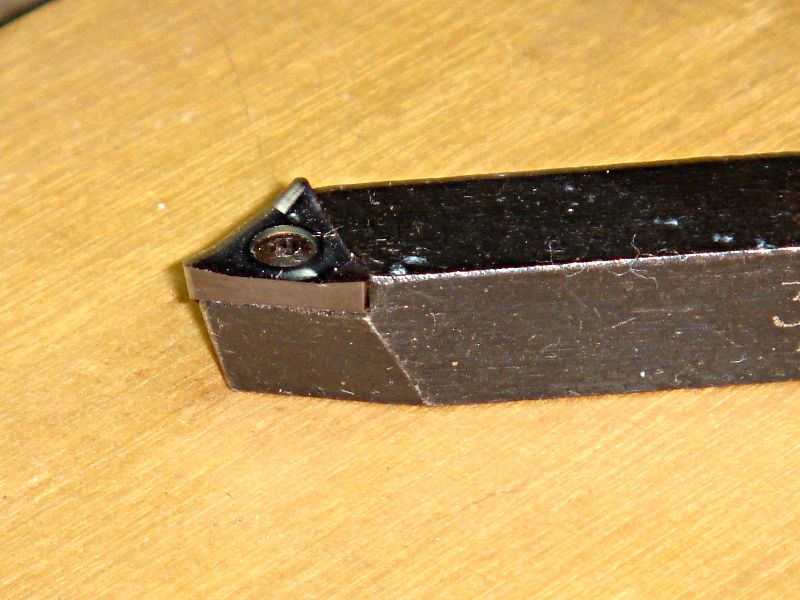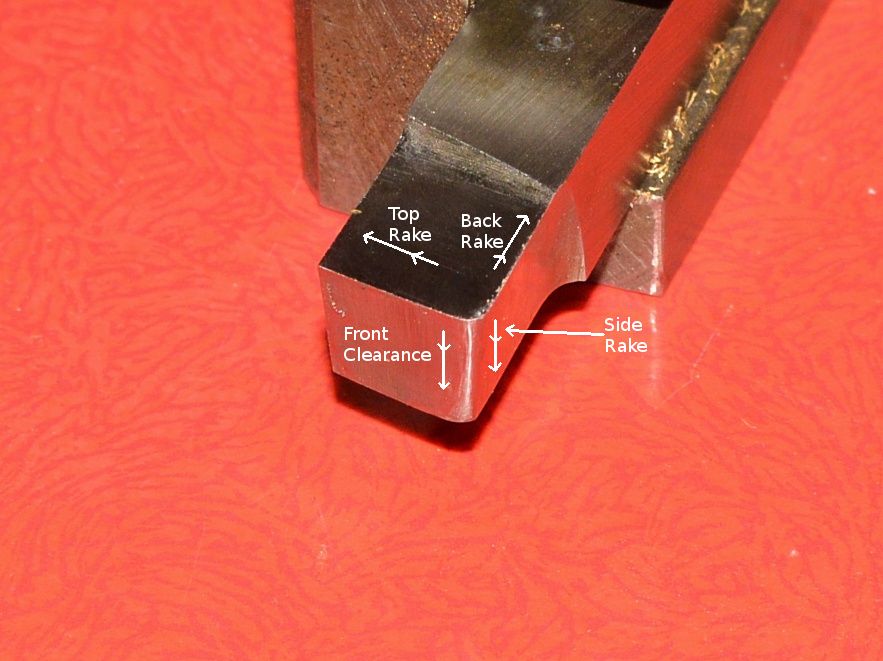In terms of hss tool angles this might help. A tool that will work well on any material. All of the angles are more or less the same except that there is little back rake. There is no point in being precise. It's the easiest tool to grind – bar turning and is often ground with less rake than this one.

It's on a 3/8" toolbit. Reflections and bits make it look a little odd in places. It's sharp and straight sided. The rad is straight as well and has been stoned on. All of the surfaces around the cutting edge have been polished with a stone. The finish of the tool is important as it will be transferred to the work and in the case of aluminium poor finish will generate more friction melting it and causing it to stick to the tool unless the cutting speed is bought well down. I periodically run the stone around the tool while it's in the lathe to keep it sharp. Some turners always do this before taking the final cut.
It would take a huge post to go through everything so just the basics. Actually I don't think that is possible anyway. A better idea is to grasp the principles and try various things out
Rads on tools distort the material more than a straight edge as it's being cut so for normal turning small is best. It just needs to be large compared with the feed. This may not be the case with extremely large rads and rather shallow depths of cut. It can be interesting to try this by turning using a parting off tool at a modest angle to the work angled in the direction of the cut. A lot depends on how tight the machine generally is.
The top and side rake form a wedge. The top rake will tend to pull the tool into the work. The side rake resists this tendency. On materials such as aluminium it's possible to increase these angles a lot and balance them so that very little effort is needed to take much larger cuts than a machine can normally take. The best balance is when the side rake has reached a point where the tool almost self feeds. Top rake to experience this is of the order of 30 degrees. Side – gradually increase it until this happens.
The catch with trying to do this on all materials is that having lots of side clearance weakens the cutting edge and on brass for instance the same tool might even self feed. On cast iron it might even chip and will wear more rapidly due to the very acute angle at the cutting edge. For various reasons including heating in use harder materials need reduced wedge angles and rakes. Just to complicate things more acute angles cut more easily which can reduce tearing. Slow speeds can help with that problem as well at times and get rid of boring bar chatter.
Back rake simply helps guide the swarf away from the work.
Front clearance is needed to prevent rubbing. If the tool happens to be above centre for some reason more is needed especially on small diameter work. This is why tools should generally be set a touch below centre – the centre height of the work may vary along the bed. The tail stock might be a touch low etc. Boring is the other way round plus the bars will bend a touch.
The other factor is heating effects. People might not think that their tools don't get hot but the problem is right at the tip of the cutting edge not the whole tool. If sharpened correctly they will cut paper. They have a very fine edge. Heat conduction rates from the edge drops off as the wedge gets sharper. It's even possible to weaken HSS when the tool is being ground. Any sign of tempering colours appearing is bad news.There are different grades of HSS. M42 for instance is reckoned to have better red heat strength than others. It's very easy to wreck some grades this way. Less so as the cobalt content goes up. 5% cobalt / HSSE is often used for any sort of metal cutting tool for this reason – to help maintain the cutting edge not the whole tool.
Tool bits needn't be large. During training I mostly used 5/16 HSS on machines that were easily capable of removing 1/2in of 4 to 5in dia mild steel along with a very heavy feed. A 3/4" or bigger super weld tool would be used for that sort of thing. In the normal range up to a 0.150" cut or so 5/16 bit were fine except for one aspect. The holders applied something like 15 degrees of back rake – grinding that on the tool would weaken it and also make grinding them more difficult. Generally when steel is provided for some job 0.150" cuts aren't needed. On a large machine to get the best out of them this is the sort of amount of excess material that is needed. A large machine in very good condition may need a cut of at least 0.040" in order to take all of the play out of it so that a consistent finish can be obtained. Materials don't have consistent hardness. Some machines would need more than that. The general idea is to use similar sized cuts to clean up and finally size a part. Some of those cuts would be used to determine exactly how much material is actually removed and the cuts adjusted accordingly. I once bought a sort of slightly larger super adept, similar thing but a smaller than a zyto. The cut need on that to get a decent finish was around 0.050", 0.1" off the diameter. It had a 1/2hp motor. That was in mild steel. It might be more or less on brass or aluminium etc.  The machine went in the bin, crap head stock bearings and no way to fix them.
The machine went in the bin, crap head stock bearings and no way to fix them.
John
–
Ajohnw.




 The machine went in the bin, crap head stock bearings and no way to fix them.
The machine went in the bin, crap head stock bearings and no way to fix them.

